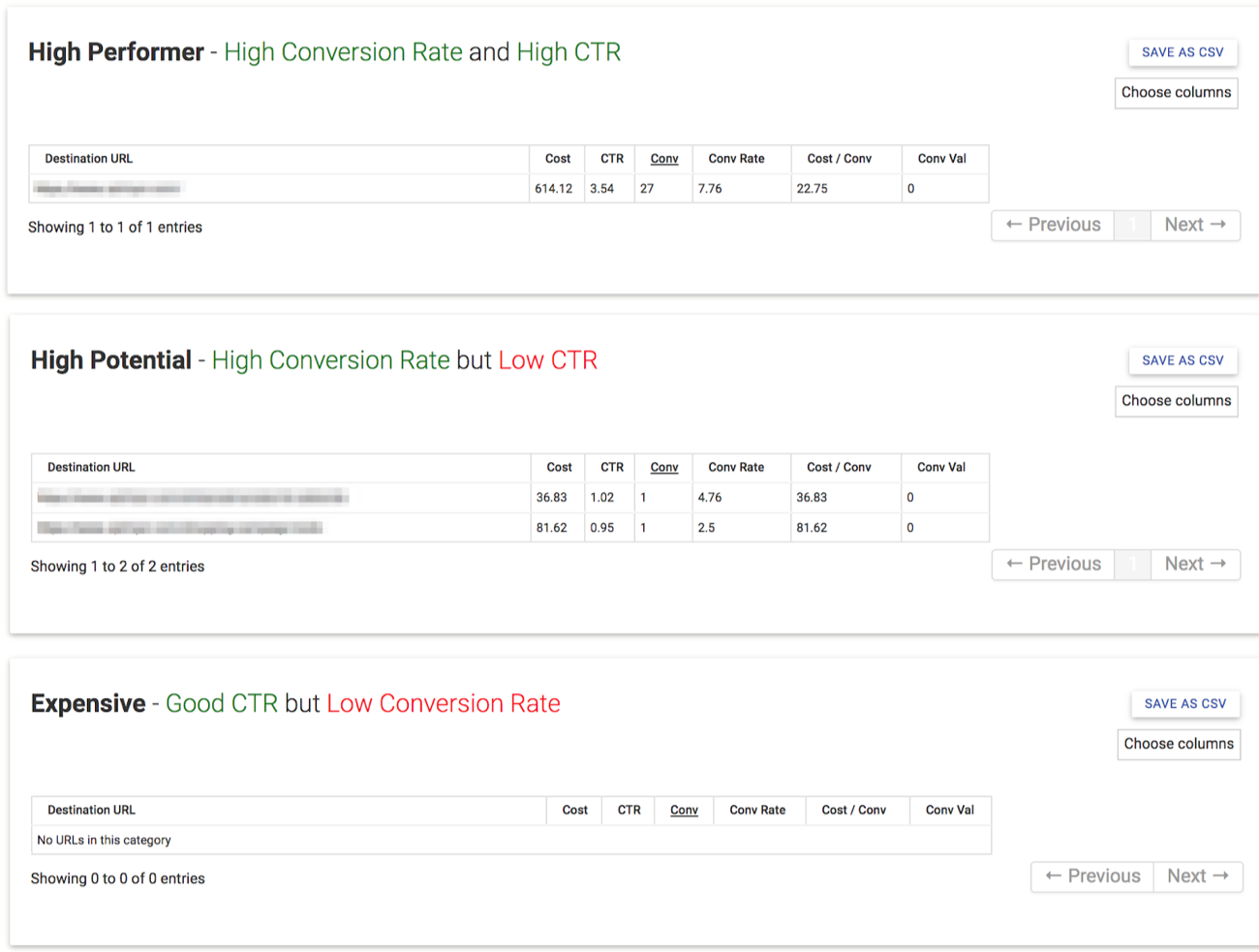When it comes to functionality and performance of landing pages, some errors go beyond a non-working URL. Here are two common use cases that you should take care of.
Ads leading to out-of-stock landing pages
Ads leading to out of stock product pages or product not found pages can become a problem both for the user as well as for the advertiser. We know Google checks the landing page your ad leads to as part of the ad approval process, but it only checks if the URL leads to an active page. So when it comes to product availability, if your ad leads to an out of stock product, your ad won’t get disapproved and you won’t get notified. Ads that lead to out of stock pages result in a bad user experience and wasted spend. It can also affect Quality Score because users don’t spend enough time on the page which can be an indicator of how relevant they found the page.
Quality Score is made up of three components: Expected Clickthrough Rate, Ad Relevance, and Landing Page Experience, this last one being a way of measuring just how well your website responds to what people searched for.
Now imagine you are looking for a digital camera. You’ve been looking all over for that model, and you see an ad that shows the specific one you wanted and at a great price, but once you click on the ad, you reach a site that reads “product not available”.
From the user’s point of view, this is a negative customer experience, and could affect the way the user views your site. From the advertiser’s point of view, it generates a wasted click and a poor landing experience that affects your overall score. When a user lands on a ‘product not available’ or ‘out of stock’ page, and because they couldn’t find what was offered in the ad, your landing page experience score will likely get affected.
The main problem with this, and as mentioned before, is that the landing pages are still considered to be ‘functional’ by Google AdWords, therefore you won’t be notified this is happening. The clicks that land on such pages are wasted but manually checking the landing page for every ad is not a feasible option. To help automate this task, we built an enhanced script called Check Destination URLs, which automatically checks the landing pages an ad leads to.
This enhanced script finds ads and keywords that lead to a 404 error, and can also check for text like ‘product not found’ or ‘out of stock’. The script generates a report with the URLs that generate this error and can also automatically pause corresponding ads and keywords. You can set it up to run for specific campaigns or for the whole account. The script has an advanced setting that lets you monitor specific text on a landing page. This helps you keep a better track of landing pages that are ‘functional’ but lead to ‘product not found’ pages. Read how this script works here.
Underperforming Landing Pages
Another great way of getting input on how the landing page for an ad is working, is by using the Landing Page Analysis tool. This tool gives you information on how landing pages are performing across the account and divides the results into three categories: High Performer, High Potential and Expensive.
The High Performer category shows landing pages with high conversion rate and high CTR. These are landing pages that are performing well.
The High Potential category shows landing pages with a high conversion rate, but a low CTR. This category shows you the landing pages where the keywords and ads that lead to them are not as relevant and can be improved. These landing pages are converting the clicks that they get quite well so directing more traffic to them is likely to result in more conversions. One way to do that is to make the keywords and ads more relevant to the landing page.
Finally, in the Expensive category you’ll find landing pages with a low conversion rate and high CTR. This usually indicates that the keyword, ad and landing page are relevant to each other but users don’t convert at a high rate after coming to the landing page. This could happen if the conversion process on the landing page is complex or is not user friendly. In such cases, it is a good idea to analyze the page and make changes to it. Read more about how the Landing Page Analysis tool works here.










